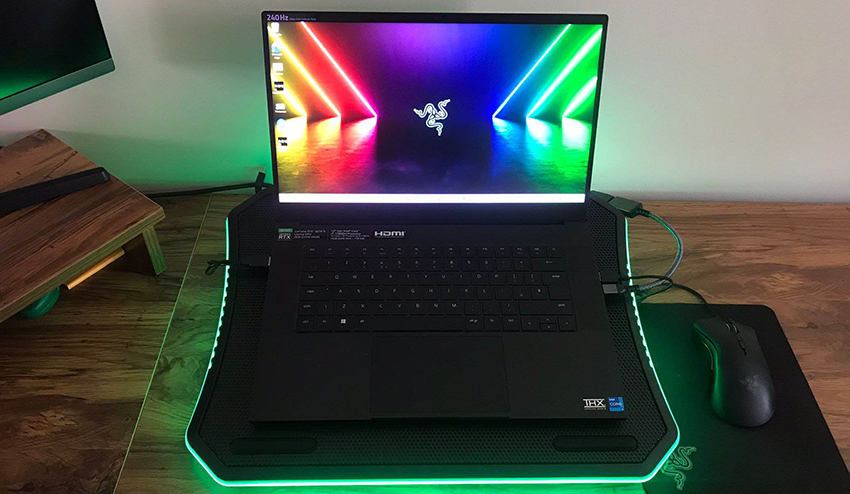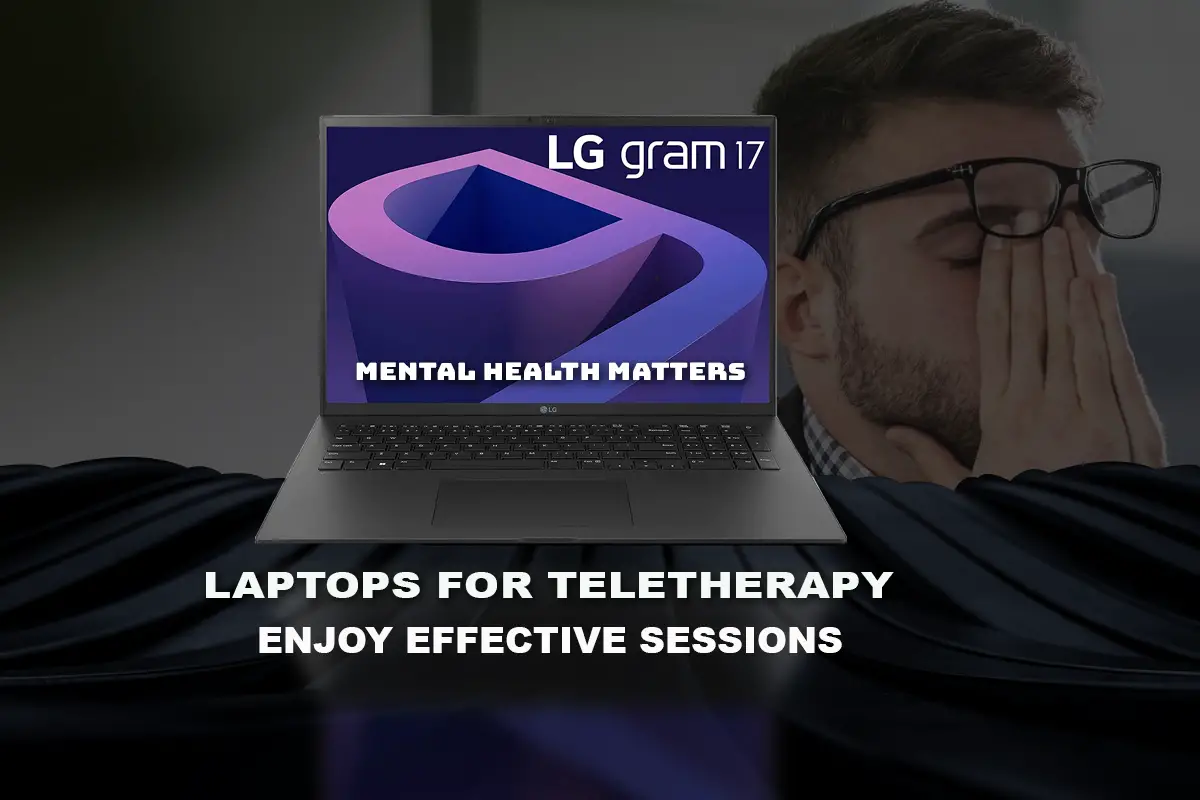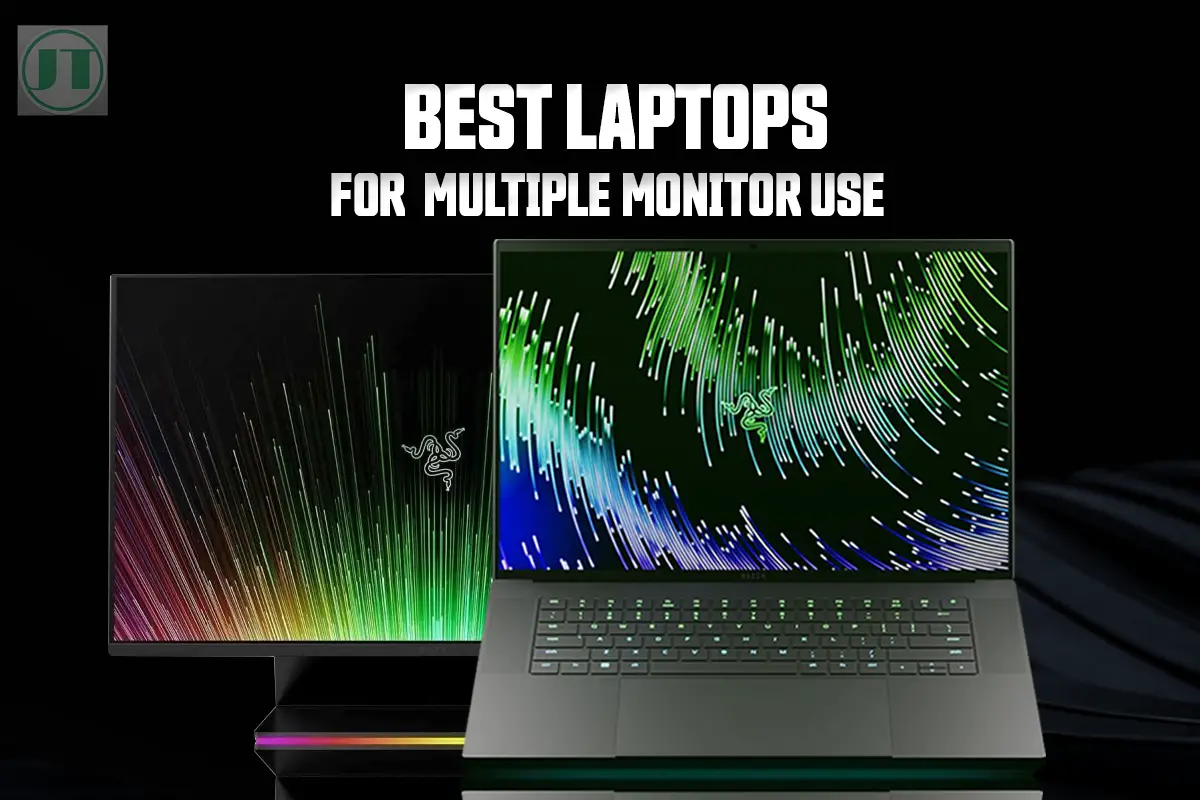Tired of your old laptop computer slowing down during those lengthy teletherapy sessions? Now it is time for something new. This article discusses the best laptops for teletherapy and telehealth.
As a fellow professional, I understand the rapidly changing technology landscape and finding a reliable and efficient laptop can be overwhelming. Do not worry this comprehensive guide will help you determine which laptop is most suitable for your needs.
In addition, I cover what type of hardware is most suited. While providing advice on what features you should consider. With my detailed tips. You will find it easier to choose a high-quality laptop to make your telehealth session a reality. Let’s dive in.
What Are The Best Laptops for Teletherapy?
The best laptops for teletherapy professionals are Razer Blade 15, the AppleMac Pro, and ASUS VivoBook. They are not only good options for workers in the mental health field. They offer excellent performance for video conferencing for individuals, and group therapy calls.
Top pick

RAZER BLADE 15
A super powerful laptop, that is durable, reliable, and perfect for running heavy duty programmes
Editor’s choice

Apple MacBook Pro
This laptop offers superior performance, incredibly fast processors, and tons of storage options
Best value

ASUS VIVIBOOK
The most beautiful OLED display that will make your online video calls looks sublime
For teletherapy professionals looking for an affordable option to easily multi task the Dell Inspiron 3000 business laptop is a viable choice. Choosing one of these laptops will help you stay focused on your clients health and worry less about the performance of the computer.
Razer Blade 15 (Best Premium Laptop)
The Razer Blade 15 is an excellent laptop for Teletherapy professionals, thanks to its powerful hardware and sleek lightweight design. It features a 15.6-inch QHD (1440p) display, a 12th gen Intel Core i7 processor, 16GB of RAM, and a huge 1TB solid-state drive.

Why Choose the Blade 15? I use the new Razer Blade 15 for working from home. It is the best laptop, and I recommend it to users who want a powerful and reliable portable computer.
What’s more, with these specs, this Razer Blade 15 can handle any demanding tasks you throw its way. Including mastering an online teletherapy and telehealth session, with no issues.
If it helps, I recently purchased this exact Razer laptop. I use it daily for video editing, content creation and online video calls. I can vouch for the quality and understand what it could bring to your professional life. Razer laptops are expensive, but if you want the best, this is it.
- NVIDIA GeForce RTX 3070 Ti Graphics
- 12th Gen Intel Core i7 14-Core CPU
- 16GB DDR5 RAM, 1TB SSD
Last update on 2024-04-24 / Affiliate links / Images from Amazon Product Advertising API
Other features include Razer Synapse 3 software, and a Thunderbolt 4 port for ultra fast data transfer speeds. USB Type C for connecting and charging your iPad or mobile phone. In addition, the Blade 15 has HDMI ports for connecting the laptop to a monitor. You can even connect these laptops to multiple monitors if you need to work on three screens.
What’s more, the Razer Blade 15 offers users superior audio quality and the Full HD (1080p) camera is ideal for online video calls. The build quality is exceptional. Featuring an all-alumimum chassis that is durable and by far the best choice for Telehealth sessions.
| Razer Blade 15 | Specification |
|---|---|
| Brand | Razer |
| CPU (Processor) | 12th Gen Intel 14-Core i7-12800H (4.8GHz) |
| Graphics | NVIDIA GeForce RTX 3070 Ti Dedicated GPU |
| RAM | 16GB DDR5 4800MHz RAM |
| Storage | 1TB PCIe4 M.2 NVMe SSD |
| Display | 15.6 inches QHD 240Hz Display, 100% DCI-P3 NVIDIA G-SYNC |
| Keyboard | Per-key RGB Razer Chroma |
| Ports | Thunderbolt 4, HDMI 2.0, 4 x USB-C, UHS-III SD card slot |
| Battery | 80WHr Battery with 2-year limited battery warranty |
| Audio | THX Spatial Audio 2-Mic Array – Stereo 2.0 | 2 Speakers |
| Webcam | Built-in webcam Full HD 1080p IR Hello |
| Chassis | Anodized CNC Aluminium |
| Size | 16.99 mm x 235 mm x 355 mm (0.67″ x 9.25″ x 13.98″) |
| Weight | 2.01 kg / 4.43 lbs |
| Colour | Matt Black |
| Price Range | $1700 to $2400 |
The Razer Blade 15 would be considered the best laptop for therapists and other professional users for video conferences or online meetings. Its powerful speakers that will facilitate superior communication and provide crystal clear audio and a beautiful QHD display are just a few reasons the Blade 15 should be considered high on your must-have list.
What We Like
- Desktop Computer Power
- Superb Overall Performance
- Masses of M.2 SSD Storage
- Beautiful QHD (1440p) Display
- Speedy UHS-III SD Reader
- NVidia RTX Graphic Card
- Vapor Chamber Cooling
What We Don’t Like
- No Webcam Shutter
- Expensive – I can vouch for their quality and are worth it.
More Helpful Content: Are Razer Laptop Durable? I answered this query here.
LG Gram (Best 17-Inch Laptop)
The LG Gram is a 17-inch ultra lightweight laptop that is perfect for users looking for a professional laptop with a large screen size. It features a lightweight design and an all day long battery life. Ideal for professionals who need to be mobile during their teletherapy and telehealth sessions.
This LG Gram has a WQXGA (2560×1600) display with DCI-P3 99% colour expression which can reproduce colours vividly. With the power from an 11th Gen Intel core i7-1165G7 CPU with integrated Intel Xe graphics, perfect for high-resolution all levels of content creation.
- 11th Gen Intel core i7-1165G7 CPU
- Intel Iris XE Graphics Solution
- 17-inch 2560 x 1600 WQXGA LCD
- 16GB LPDDR4X RAM, 2TB SSD
- Colour: Black
Last update on 2024-04-24 / Affiliate links / Images from Amazon Product Advertising API
The LG Gram also packs in 16GB LPDDR4X 4266mhz RAM, and a massive 2TB PCIe M.2 NVMe SSD (solid-state drive). It does not offer the same level of power as the Razer Blade 15, but still more than capable of handling telehealth sessions and online meetings.
| LG Gram 17 | Specification |
|---|---|
| Brand | LG |
| CPU (Processor) | 12th Gen Intel Core Processor i7-1260P (4.7GHz) |
| Graphics | Integrated Iris Xe graphics |
| RAM | 16GB DDR5 5200MHz RAM |
| Storage | 1TB PCIe4 M.2 NVMe SSD |
| Display | 17 inches WQXGA IPS Display With DCI-P3 99% |
| Keyboard | Backlit Keyboard – 101 Key |
| Ports | Thunderbolt 4, HDMI 2.0, USB-C, USB-A, microSD card reader |
| Battery | 80WHr Battery (19 hours Video) |
| Audio | DTSX Ultra |
| Webcam | Built-in Webcam Full HD 1080p IR Hello |
| Chassis | Military Grade Materials |
| Size | 17.7 mm x 258 mm x 378 mm (0.69″ x 10.15″ x 14.88″) |
| Weight | 1.35KG (2.98lbs) |
| Colour | Black |
| Price Range | $1100 to $1400 |
The 17-inch LG Gram laptop is an ideal device for teletherapy sessions. Stylishly designed and offers portability backed by many hours of battery life. It would be a viable choice for face-to-face and virtual meetings allowing you to confidently work remotely without worrying about anything other than your clients.
What We Like
- Fast 12th Gen Intel Processors
- Superb 1440p Screen Resolution
- Loads Of M.2 SSD Storage
- LPDDR5 5200Mhz Memory
- Plethora Of Speedy Ports
- All Day Long Battery Life
- Windows Hello Compatible
- Lightweight Considering Size
What We Don’t Like
- Larger Footprint – Not as portable as some of the other laptops
- Relatively Expensive
ASUS Vivobook (Best OLED Display)
The ASUS Vivobook laptop is a great middle-ground option, offering a good balance of power and portability. The Vivobook has an impressively beautiful OLED display with 100% DCI-P3 Pantone and 600nits that will bring a plethora of bright colours to your working day.
It features a 12th Gen Intel Core i7-12700H processor with Intel’s Iris Xe integrated graphics. 16 GB RAM, and a 512GB solid-state drive. What’s more, it has a slim and lightweight design, and so is perfect for medical students or other professionals on the go.
- Intel Evo 12th Gen i7-12700H Processor
- Integrated Intel Iris Xe Graphics
- 16GB DDR5 RAM, 1 TB PCIe SSD
Last update on 2024-04-25 / Affiliate links / Images from Amazon Product Advertising API
The plethora of ports is also impresses, including Thunderbolt 4 that will offer 40 Gbps transfer speeds. A USB 2.0 Type-A, USB 3.2, and an HDMI 2.1. So if you want to connect a monitor you can with several ports left over to connect other devices.
One of the best things, is the Vivobook comes with a webcam with 3DNR technology so your video calls will look clear in low light conditions. Unlike the Razer Blade 15, this model features a camera shutter for instant privacy. Important for teletherapy professionals.
| ASUS Vivobook | Specification |
|---|---|
| Brand | ASUS |
| CPU (Processor) | 12th Gen Intel 14-Core i7-12700H (4.7GHz) |
| Graphics | Integrated Iris Xe graphics |
| RAM | 16 GB RAM (DDR5 4800MHz) |
| Storage | 1TB PCIe4 M.2 NVMe SSD |
| Display | 14.5 inches 2.8K 120Hz OLED Display, 600nits HDR Peak Brightness |
| Keyboard | Ergo Sense Backlit Keyboard, Fingerprint Reader |
| Ports | 2 Thunderbolt 4, HDMI 2.0, USB 2.0, USB 3.2 |
| Battery | 70WHr Battery |
| Audio | AI Noise-Cancelling Audio |
| Webcam | 3DNR Built-in Webcam With Camera Shutter |
| Chassis | Metal Body Chassis |
| Size | 17.78 mm x 230 mm x 322 mm (0.70″ x 9.09″ x 12.69″) |
| Weight | 1.62 kg / 3.59 lbs |
| Colour | Dark Grey or Silver |
ASUS has installed a fingerprint reader and Windows 11 operating system, which offers loads of benefits for professional users. The build is solid with a durable metal body chassis making his the perfect laptop for less than $1000 that does not sacrifice on performance.
What We Like
- Fast 11th Gen Intel Processors
- Superb 120Hz OLED Screen
- AI Noise-Cancelling Audio
- Webcam Shutter for Privacy
- Plethora Of Speedy Ports
- Extremely Lightweight
- Good In This Price Range
- Good Overall Performance
What We Don’t Like
- Can Get Warm Underload
- Mediocre Battery Life
Dell Inspiron 3000 (Best Budget Business Laptop)
For telehealth professionals on a tight budget the Dell Inspiron 3000 laptop, is the perfect affordable solution for modern professionals who work from home. It has a sharp 15.6 HD LED-backlit display, and an Intel Celeron Processor N4020 that runs up to 2.8GHz.
The Dell Inspiron 3000 runs on Windows 10 Pro operating system which does offer enterprise-grade security features. As for memory, the Dell Inspiron laptop comes with only 8GB of DDR4 RAM, so just enough power to multitask between files quickly and comfortably.
- Intel Pentium Silver N5030 Processor
- Integrated Intel UHD Graphics
- 16GB DDR4 RAM, 1TB HDD
- Weight: 1.65KG (3.63lbs)
- Colour: Black
Last update on 2024-04-25 / Affiliate links / Images from Amazon Product Advertising API
While you can save a good few of your video calls with the supplied 128GB SSD. Connectivity is decent considering is cheaper price tag, with Wi-Fi 802.11ac internet connection to help you stay connected. It also features an integrated HDMI port and a much needed Webcam.
The Dell Inspiron comes with Bluetooth 5.1 and an SD Card Reader for maximum convenience when transferring files. All packed into a sleek and solid black chassis. That will ensure to make a statement during your next meeting or therapeutic chat.
| Dell Inspiron | Specification |
|---|---|
| Brand | DELL |
| CPU (Processor) | Intel Pentium N5030 Quad-Core (3.0GHz) |
| Graphics | Integrated Intel UHD Graphics 605 |
| RAM | 8 GB RAM (DDR4-2400 SDRAM) |
| Storage | 128GB M.2 PCIe NVMe SSD |
| Display | 15.6-inch HD (1366 x 768) Anti-glare LED-Backlit Display |
| Keyboard | Ergo Sense Backlit Keyboard, Fingerprint Reader |
| Ports | HDMI 1.4, USB 2.0, USB 3.1, RJ-45, SD Card Reader |
| Battery | 42WHr Battery |
| Audio | Stereo Speakers |
| Webcam | None |
| Chassis | Plastic Body Chassis |
| Size | 19.8 mm x 248 mm x 363 mm (0.78″ x 9.80″ x 14.33″) |
| Weight | 1.77 kg / 3.91 lbs |
| Colour | Black |
Overall, the Dell Inspiron 3000 is far from the most powerful laptop but for budget-conscious users it will deliver medium performance. Offering decent visuals to keep your therapy sessions safe and running smoothly. Considering all that, this Dell Inspiron laptop will handle all your day to day tasks easily.
What We Like
- Decent Budget Laptop
- Affordable Performance
- Has Windows 11
- Lightweight Design
- Solidly Built
What We Don’t Like
- No Webcam Shutter
- Short On High-Speed Ports
- Low Screen Resolution
Apple MacBook Pro (Best Performance)
A list of the best laptops for Telehealth and Teletherapy sessions would not be complete without one of the most capable computers with a sleek design, the Apple MacBook Pro. The perfect portable device for professional users who want a laptop with plenty of horsepower.
The MacBook Pro has a number of features that make it well suited for this line of work. These include a powerful processor that not many professional laptops can match. The M2 chip can handle multiple applications and tasks including video conferencing software.
- M2 8-core CPU, 10-core GPU
- 13.3-inch Retina display
- 24GB of Unified Memory
- 256GB or 512GB SSD
- Weight: 1.4KG (3.00lbs)
- Colour: Silver
Last update on 2024-04-25 / Affiliate links / Images from Amazon Product Advertising API
The MacBook Pro has a beautiful high-resolution retina display with 500 nits of brightness and P3 wide color for vibrant images. Equipped with ProMotion technology that dynamically adjusts refresh rates to maximize battery life and provide a smooth experience.
Whether performing simple activities like web browsing or more demanding tasks like video calls, the MacBook will adjust its frame rate from 120Hz to 240Hz for unparalleled responsiveness.
Another feature for teletherapy professionals is the use of high-quality audio. This MacBook has a built-in microphone and speakers that include two tweeters and force-cancelling woofers. While the solid FHD webcam will make light work of your online video chats.
| MacBook | Specification |
|---|---|
| Brand | APPLE |
| CPU (Processor) | Apple M2 chip, 8-core CPU |
| Graphics | Apple 10-core GPU |
| Memory | Up to 24 GB RAM (unified memory) |
| Storage | 256GB or 512GB SSD (Max 2TB) |
| Display | 13-inch Retina display with True Tone – 500 nits brightness |
| Keyboard | Magic Keyboard, Force Touch trackpad |
| Ports | Thunderbolt 3, USB, USB 3.1 Gen 2 |
| Battery | 58.2WHr Battery |
| Audio | Studio-quality three-mic array – Stereo speakers with Spatial Audio |
| Webcam | 720p FaceTime HD camera |
| Chassis | Metal Body Chassis |
| Size | 15.6 mm x 212 mm x 304 mm (0.61″ x 8.36″ x 11.97″) |
| Weight | 1.4KG (3.00lbs) |
| Colour | Silver or Grey |
The Apple MacBook Pro is not just a good laptop for certified teletherapy therapists it is one of the best laptops available due to its power, display quality, and video capabilities. Allowing you to be successful in offering the best treatment for your clients.
What We Like
- Amazing Apple M2 chip
- Dual Thunderbolt 4 Ports
- Latest Wi-Fi 6 Technology
- Lightweight Design
- Built-in Full HD Webcam
- Extremely Long Battery Life
What We Don’t Like
- Not Easily Upgradable
- Quite Expensive
Acer Aspire 5 (Best Cheap Laptop)
The Acer Aspire 5 is a slim, lightweight laptop and an excellent go-to solution for digital healthcare professionals. An all-in-one powerhouse that offers impeccable performance, considering its cheaper price tag.
This Acer laptop features a bright and colourful 15.6 inch display. With an Intel Core i7 with 4-Cores that clocks up to 5.00 GHz, packed with Intel Iris Xe Graphics that will enhance your viewing experience. This laptop will power through your professional apps and video calls.
The Acer Aspire 5 comes with 16GB RAM, which is more than enough memory if you need to jump from app to app without having to shut them down. The 512GB NVMe SSD offers plenty of storage space and together make this the ideal laptop for remote working.
| Acer Aspire | Specification |
|---|---|
| Brand | ACER |
| CPU (Processor) | Intel Core i7-1195G7 4-Core CPU |
| Graphics | Intel Iris Xe Graphics |
| Memory | 16 GB RAM (DDR4) |
| Storage | 512GB SSD (Max 2TB) |
| Display | 15.6-inch Full HD IPS Display |
| Keyboard | Backlit Keyboard, with Number pad |
| Ports | USB Type-C, USB 3.1 Gen 2, HDMI |
| Battery | 48WHr Battery |
| Audio | Stereo speakers |
| Webcam | 720p FaceTime HD camera |
| Chassis | Metal Frame and Plastic Chassis |
| Size | 238 mm x 360 mm x 179 mm (0.61″ x 7.0″ x 14.17″) |
| Weight | 1.8KG (2.20lbs) |
| Colour | Silver or Grey |
| Price Range | $500 to $800 |
It also features ultra-fast Wi-Fi 6 connectivity giving you access to the Internet at lightning fast speeds. All supported by powerful Windows 11 Home, allowing you to multitask and remain in total control over your data management needs.
Overall, the Acer Aspire is the perfect laptop for casual users and professionals seeking superior performance. It is an excellent choice for work-from-home users who do not want to spend too much but want a powerful laptop that looks as good as it runs.
What We Like
- All Day Battery Life
- Good Intel Processor
- Latest Wi-Fi 6 Technology
- Slim & Lightweight Design
- 16GB of DDR4 RAM
- Extremely Long Battery Life
What We Don’t Like
- Low Display Quality
- Only 4 Core CPU
What to Consider When Selecting a Laptop for Telehealth?
Teletherapy and telehealth have gained widespread popularity in recent years as a means for people to access healthcare services remotely. For teletherapy professionals, having a reliable and capable laptop is essential for delivering mental health treatments online.
When purchasing a laptop for teletherapy, it is important to ensure that it is durable and rugged enough to be easily transported from one session to another without any issues. Here are several important specifications to consider when choosing a laptop for teletherapy professionals.
A Fast Processor is Essential
When it comes to teletherapy, it is important to choose a laptop with fast processing speed. A good laptop for telehealth professionals should have a CPU with at least 4 cores and a processing speed of 2 GHz or higher to ensure smooth and high-quality video calls with clients.
For even better performance, I recommend choosing a laptop with a processor with 6 cores. This will allow you to run multiple applications without any lag or other issues. An Intel Core i5 11th, 12th, or 13th generation processor would be an ideal choice.
Ensure Ample Memory
Having sufficient memory (RAM) is crucial for running therapy software, video conferencing, and other applications. Most teletherapy professionals will find 8 GB of RAM sufficient, ensuring fast overall speeds when running programs.
Having less than 8 GB of RAM may lead to slower performance and could prove to be highly frustrating when conducting online telehealth sessions. If you need to run multiple applications at once, such as video conferencing software, word processing, email, and a virtual whiteboard, having more than 8 GB of RAM is advisable.
In general, 8 GB of RAM is sufficient, but this can depend on other tasks you perform on your laptop. For more demanding tasks, such as video editing, 16 GB of RAM is recommended.
Ensure Ample Storage
For most teletherapy professionals, a laptop with 512 GB of SSD (solid-state drive) should provide ample space to save video recordings and files without having to constantly delete anything.
If budget is a concern, a laptop with a 256 GB SSD is also sufficient. But it is always better to err on the side of caution and opt for a laptop with more storage space than you need.
It is also a good idea to check if the laptop has M.2 drives, as this will allow you to add additional SSD storage if necessary. Having two SSDs in a laptop will ensure a fast and responsive experience. Avoid laptops with HDD as they are slower and more prone to damage.
Display and Camera Quality
When choosing a laptop for teletherapy, it is imperative you consider the quality of the display and camera, as the therapist needs to see the patient clearly and have a stable video communication.
An HD or FHD display and HD camera are more than adequate for teletherapy sessions. Additionally, the laptop should have a good microphone for clear communication during video conferences, enabling you to provide clear healthcare advice.
Other Features Worth their Weight
In addition to these laptop specs, it is important to consider the battery life, especially for teletherapy professionals who may need to work for extended periods without access to a power source.
Portability is another important consideration, as you may need to transport your laptop frequently. A lightweight and portable model may be ideal in this case, but if you do not plan to carry your laptop far, a larger laptop with more screen space may be a better option.
Helpful Content: You may like to learn how to make your laptop battery last longer
Telehealth Laptop Requirements
The minimum requirements for telehealth remote works as as follows;
| Component | Minimum Requirements |
|---|---|
| Processor | 10th Gen Intel Core i3 or Equivalent to AMD Ryzen 3 |
| Graphics | Integrated Intel UHD or AMD Vega 8 (Not as important) |
| RAM | 4GB RAM DDR4 (Best 8GB of RAM) |
| Storage | 1TB HDD or 256GB SSD |
| Display | 1080P Full HD |
| Webcam | 720p (Best 1080p) |
| Ports | USB Type-C (Thunderbolt 4 Best) |
| Battery | 5 hours to 7 hours of battery life |
Frequently Asked Questions
What Are The Best Laptops For Teletherapy?
The best laptops for teletherapy, should be reliable and capable of handling the demands of virtual therapy sessions. It must have adequate computing power, like an Intel Core i5 CPU (or higher), 8GB RAM, and an SSD drive with plenty of storage space. Good battery life is also a must. The Apple MacBook Air, Razer Blade 15, and LG Gram are great laptops for telehealth professionals
Which Laptop Has Good Webcam For Teletherapy Professionals?
The laptops with great webcams are the Razer Blade 15 and the LG Gram. Both of these offer high-resolution 1080p webcams. But neither have camera shutters. So, if you prefer to have one check out the ASUS Vivobook above. This model features a webcam with 3D Noise Reduction technology and a privacy shutter.
Which Laptop is Best For Online Meetings?
The best laptops for online meetings will depend on your budget and specific needs. If you have a higher budget, and want a powerful and sleek laptop. Razer Blade laptops are superb. If you want something affordable yet still capable of meeting your needs, the Acer Swift, Dell XPS or the HP Pavilion range are excellent choices.
How Much Should A Laptop for Teletherapy Cost?
The cost of a laptop for teletherapy professionals will depend on several factors. But generally speaking, if you are only using your laptop computer for teletherapy purposes. It does not have to be too fancy. Most therapists are able to get by with an inexpensive Chromebook or a basic Windows machine. However, if you want more features, such as a larger screen size, higher processing power or greater storage capacity? You may want to consider more expensive options. I’ve found that laptops suitable for teletherapy can range from $400 – $2k+.
What Equipment is Needed For Online Meetings?
Depending on your setup, there are several tools that you will need to ensure smooth online meetings. First, you’ll need a laptop with a reliable internet connection, and an ethernet port. Also, a microphone and a camera are necessary for any type of video conference call or teleconferencing session. Speakers are also fundamental and finally, voice-over IP (VoIP) technology should not be overlooked.
Conclusion
There we have it, a list of some of the best laptops for teletherapy and telehealth sessions in 2023. Hopefully, there is a solution for you. If not, at least you now know what to look out for.
In summary, the Razer Blade 15 provides the most power and performance. While the LG Gram is a viable option for users who prefer a larger laptop. The ASUS Vivobook offers a good balance of power and portability, which makes it a solid choice for this type of remote work.
Thanks For Reading, Cya Again Soon
Helpful Content: Still struggling to find a laptop? Read this gaming laptop buying guide here. You may find some useful information there.










